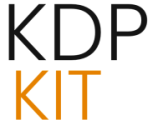
The Profound Impact on Independent Authorship and Revenue
The introduction of Kindle Translate is more than a technical upgrade; it is a powerful economic stimulus aimed squarely at the independent author community, which has historically been underserved by traditional multinational publishing houses regarding foreign rights and translation investment. Traditional publishing houses often only translate titles deemed high-risk/high-reward—a calculation an independent author can now make for themselves, instantly and cheaply.
Democratizing Global Reach: Overcoming Traditional Budget Constraints
The service effectively renders the barrier of translation cost near-zero for participating authors, a factor frequently cited as the ultimate roadblock to international expansion for self-publishers. As noted by independent author Roxanne St. Claire in commentary surrounding the launch, for many years, a trustworthy and cost-effective solution for foreign language translation simply did not exist outside of securing complex foreign publishing deals. Kindle Translate breaks this paradigm.
It enables a direct, affordable route to a worldwide readership, thus allowing niche genres or highly specialized non-fiction to find their specialized global communities instantly. Think of a self-published expert on 17th-century clock restoration; their global audience is small, but highly concentrated. Before, reaching that concentrated audience in Germany or Spain was prohibitively expensive. Now, that niche can be served for the cost of the author’s time to review the AI output.
This democratization is a massive boon for authors who write in niche areas. It levels the playing field against established conglomerates who could afford the multi-thousand-dollar upfront costs for professional foreign rights deals. This shift fundamentally changes the economics of being an author income diversification strategy.
Ecosystem Participation: Eligibility for Key KDP Programs
Crucially, the translated editions are not relegated to a secondary marketplace status; they are fully integrated into the core revenue-driving programs of the Kindle ecosystem. These foreign-language versions maintain their eligibility to be enrolled in KDP Select. This means they are immediately available for consumption via the Kindle Unlimited (KU) subscription service in those specific international marketplaces.
For authors, this inclusion translates into access to a massive, pre-existing pool of subscription-based readers in target territories. For many indies, KU is a steady, recurring revenue stream that further validates the investment of time in the translation process, even if the initial per-unit purchase price in that local market is lower than in the US.
This is a strategic advantage. A book in KDP Select is actively promoted to KU subscribers. By adding a Spanish-language edition and enrolling it in the Spanish-language KU program, an author is essentially putting their translated work in front of a highly engaged, pre-paying readership pool, which is far more valuable than simply listing it and hoping for organic discovery.
The Evolving Landscape for the Global Reader Community. Find out more about Kindle Translate AI translation for self-publishing authors guide.
The ultimate success of this platform hinges on its ability to satisfy readers by dramatically expanding the available catalog of content in their preferred languages, thereby fostering deeper engagement with the digital reading platform itself. A platform with millions of books in one language is large; a platform with millions of books in twenty languages is a library.
Enhanced Discovery Through Clear AI Translation Indicators
For the reader, the labeling system serves as a positive mechanism for discovery rather than a potential deterrent. While some may consciously seek out solely human-translated works, the “Kindle Translate” tag acts as an immediate signal to those whose primary objective is to read a specific story or access information in their native or fluent language, regardless of the translation method. It signals immediate availability in their preferred language.
The provision of sample previews allows readers to assess the translation quality on their own terms before committing to a purchase, fostering trust in the new offering. This self-verification loop is far more powerful than a simple marketing promise. Readers vote with their wallets, and the sample lets them check the mechanics of the AI output themselves. This consumer agency is key to adoption.
The Promise of Future Linguistic Expansion and Content Diversity. Find out more about Kindle Translate AI translation for self-publishing authors tips.
While the initial language offering is focused, Amazon has explicitly indicated an ongoing commitment to expanding the supported language pairs over time. This future roadmap suggests that the service will progressively unlock access to an even wider array of global markets, bringing stories from English-speaking authors to readers in dozens of other languages, and conversely, allowing international authors using the platform to easily enter the English-speaking sphere.
This expansion is key to fulfilling the platform’s potential as the world’s most comprehensive digital bookstore. Imagine the day when a debut author in Vietnam can use the tool to translate their novel into English and reach the massive Anglophone market instantly, or when a Spanish-language author can reach the German market without navigating complex, multi-country rights negotiations. This potential for true two-way global content flow is the real long-term prize.
Industry Context and Future Trajectories
The launch of Kindle Translate does not exist in a vacuum; it is part of a larger corporate strategy emphasizing technological empowerment for content creators and a global approach to media consumption, suggesting a sustained commitment to this technological avenue. The AI race is not confined to search engines; it is now about controlling the entire content pipeline, from creation to consumption.
Alignment with Broader Amazon Initiatives in Multilingual Media. Find out more about Kindle Translate AI translation for self-publishing authors strategies.
This new eBook translation tool echoes similar strategic deployments in other content verticals within the broader corporate structure. Reports indicated earlier in 2025 that Amazon’s audiobook division, Audible, had previously introduced its own multilingual AI narration tool, demonstrating a coordinated, cross-platform drive to leverage artificial intelligence to break down language barriers across different media formats.
Audible’s development, which included plans for AI translation with optional human review for Spanish, French, Italian, and German, signals that multilingual content generation is not a passing experiment but a core pillar of Amazon’s long-term strategy for digital media dominance and creator services [cite: 1 (Audible)]. Whether it’s text for an eBook or synthesized speech for an audiobook, the corporate focus is clearly on making content borderless. You can read more about Audible’s plans for AI narration and translation to see the scope of this media push.
Considerations on AI Nuance Versus Human Interpretive Fidelity
As the service matures, the ongoing conversation will inevitably pivot to the philosophical and artistic implications of machine translation versus the art of human literary interpretation. While the technology offers unparalleled efficiency, critics and discerning readers will continue to scrutinize how well AI captures the intangible elements of literature—subtext, cultural resonance, and authorial voice—that often require deep, human-centric understanding.
This is the central tension in the new publishing landscape. The choice for the author boils down to a risk/reward calculation:. Find out more about Kindle Translate AI translation for self-publishing authors overview.
The balance between maximizing reach through AI and ensuring the preservation of artistic integrity will remain a central, fascinating area of development and debate within the publishing world for years to come. This discussion is only now truly beginning thanks to this disruptive new utility.
The entire publishing sector is now actively engaged in tracking how these AI systems continue to improve their ability to handle complex, emotionally resonant long-form narratives. The initial successes of Kindle Translate are setting a new, higher standard for what is achievable in the realm of self-service global content deployment. This tool fundamentally redefines the capabilities expected from a modern digital publishing platform. For authors looking to stay ahead, understanding the technical foundation is the first step to mastering this new global market. If you want to drill down on how to maximize your efforts in this new era, review our guides on advanced KDP publishing tactics.
Conclusion: The New Global Self-Publisher Playbook. Find out more about Automated eBook localization via KDP dashboard definition guide.
Kindle Translate is a landmark moment for independent authorship. It strips away the primary financial and logistical barriers that have kept the vast majority of self-published books locked within their primary linguistic markets. The technology underpinning it—deep learning applied to contextual linguistics—is the cutting edge, accessible right now via the KDP dashboard.
Key Takeaways and Actionable Insights for November 2025:
The opportunity is now for the taking. The tools are in the dashboard. The question is no longer *if* you should go global, but *how fast* you can get your first translated title published.
What are your initial thoughts on publishing your backlist into Spanish or German? Drop a comment below and tell us which title you’re considering running through Kindle Translate first!






